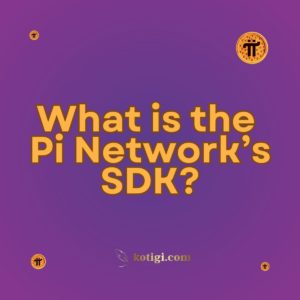
What is the Pi Network token?
The Pi Network token, known as Pi, is a digital currency that can be mined using mobile devices. Designed to facilitate peer-to-peer transactions and foster community engagement, the Pi token aims to create an accessible cryptocurrency ecosystem that empowers users and developers alike.
Introduction
In the realm of cryptocurrency, tokens play a vital role in defining the functionality and usability of a digital currency. Among the emerging cryptocurrencies, the Pi Network token, commonly referred to as Pi, has garnered significant attention due to its unique mining process and community-centric approach. Unlike traditional cryptocurrencies, which often require specialized hardware and significant energy consumption, the Pi Network allows users to mine its token through a mobile application. This innovative method not only democratizes access to cryptocurrency but also fosters community engagement and collaboration. This article explores the intricacies of the Pi Network token, including its purpose, mining process, potential uses, and the overarching vision behind it.
Understanding the Pi Token
What is the Pi Token?
The Pi token is a digital currency created by the Pi Network to facilitate transactions within its ecosystem. Designed to be user-friendly and accessible, the token can be mined using everyday mobile devices. The creators of the Pi Network aimed to provide a currency that could be used by anyone, regardless of their technical background or financial resources. By doing so, they hope to democratize access to cryptocurrency and create a more inclusive financial landscape.
Token Supply and Distribution
The total supply of Pi tokens is capped, meaning that there will only ever be a fixed number of tokens available. This deflationary mechanism is intended to create scarcity and potentially increase the value of the tokens over time. The distribution of Pi tokens is primarily driven by the mining process, where users earn tokens through their participation in the network. The distribution model also includes rewards for inviting new users, further promoting community growth and engagement.
The Role of the Pi Token in the Ecosystem
The Pi token serves multiple purposes within the Pi Network ecosystem. Primarily, it is used for peer-to-peer transactions, allowing users to send and receive payments seamlessly. Additionally, the token is intended to be used in various applications that will be developed on the platform, ranging from e-commerce to social networking. This versatility is crucial for establishing the Pi token as a viable currency within the broader digital economy.
Mining Pi Tokens
The Mining Process
Mining Pi tokens is a straightforward process that allows users to earn cryptocurrency through their mobile devices. Users must download the Pi Network app, create an account, and start mining by tapping a button once every 24 hours. This user-friendly approach to mining is designed to be energy-efficient and accessible to a wider audience compared to traditional mining methods that require expensive hardware and high electricity costs.
Community-Based Mining
The mining process also incorporates a community aspect, where users are encouraged to invite others to join the network. When users invite friends, both the inviter and the invitee can earn additional Pi tokens. This referral system helps to expand the user base, fostering a sense of community and collaboration among participants. The growth of the network is essential for increasing the overall value and utility of the Pi token.
Phases of Mining
The mining process consists of different phases, each with its own features and expectations. In the initial phases, users focus on increasing their mining rate and building their network. As the project evolves, users will gain access to additional functionalities, including the ability to spend their tokens on goods and services and participate in various decentralized applications (dApps).
Use Cases for the Pi Token
Peer-to-Peer Transactions
One of the primary uses of the Pi token is for peer-to-peer transactions. Users can send and receive Pi tokens to one another, facilitating a decentralized payment system that eliminates the need for intermediaries. This capability is particularly valuable for individuals in regions with limited access to traditional banking services, providing them with an alternative means of conducting transactions.
Merchant Integration
As the Pi Network continues to grow, the potential for merchant integration becomes increasingly viable. Businesses can accept Pi tokens as a form of payment, allowing users to spend their tokens on a variety of goods and services. This integration is essential for establishing the Pi token as a legitimate currency in the market and creating a sustainable ecosystem for users.
Decentralized Applications (dApps)
The Pi token is also expected to play a critical role in the development of decentralized applications (dApps) within the Pi Network. Developers can create various applications that utilize Pi tokens for transactions, services, and rewards. This potential for dApps enhances the utility of the Pi token and encourages innovation within the ecosystem.
Future Prospects of the Pi Token
Listing on Exchanges
One of the significant milestones for the Pi Network is the anticipated listing of the Pi token on cryptocurrency exchanges. This event would mark a crucial step toward establishing the token’s value in the broader market. Listing on exchanges would allow users to trade their Pi tokens for other cryptocurrencies or fiat currencies, providing them with liquidity and investment opportunities.
Growth of the Pi Ecosystem
As the Pi Network evolves, the demand for the Pi token is expected to grow, driven by increased adoption and usage. The expansion of the ecosystem will create more opportunities for users to engage with the token, whether through transactions, dApps, or merchant integration. This growth will be vital for maintaining the token’s relevance and ensuring its long-term viability.
Community and Developer Involvement
The future of the Pi token is also closely tied to community and developer involvement. As users continue to engage with the network and contribute to its growth, the value of the token is likely to increase. Additionally, developers play a crucial role in creating applications that enhance the user experience and expand the utility of the token. A vibrant community and a thriving developer ecosystem will be essential for the success of the Pi token in the long run.
Conclusion
The Pi Network token represents a significant innovation in the cryptocurrency landscape, offering users an accessible and community-driven approach to mining and utilizing digital currency. With its focus on peer-to-peer transactions, merchant integration, and decentralized applications, the Pi token aims to create a robust ecosystem that empowers individuals and fosters collaboration. As the Pi Network continues to grow and evolve, the future of the Pi token looks promising, with potential applications and use cases that could redefine how we engage with digital currency.
Key Takeaways
- Definition of Pi Token: The Pi token is a digital currency created by the Pi Network, designed for easy mining and user accessibility.
- Mining Process: Users can mine Pi tokens through a mobile app, promoting community engagement and user participation.
- Use Cases: The Pi token facilitates peer-to-peer transactions, merchant integration, and serves as a means for decentralized applications (dApps).
- Future Prospects: Anticipated exchange listings and ecosystem growth are crucial for establishing the Pi token’s market value.
- Community Involvement: The success of the Pi token is closely tied to community engagement and developer contributions within the network.





